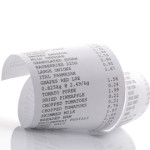
The proper introduction of fluids and foods in the first few days and weeks after gastric sleeve surgery is important for preventing complications and ensuring the long-term success of your procedure. The Bariatric Surgery Diet we prescribe will prevent you from stretching the new small stomach that was formed during your operation and allow time for the sleeve incision and staples to heal.
1 to 2 Weeks After Surgery: Liquid Diet
A liquid diet will allow your stomach a chance to heal properly after surgery. You’ll need to limit yourself to clear liquids, including water, clear broths, skim milk, fruit juice, and no-sugar-added popsicles. At this stage, you’re encouraged to consume liquids with calories. After you’ve moved on to solid foods, you’ll no longer want to “drink your calories,” but during the early stages it’s important that your body gets calories and nutrients while you allow the band to settle. Make sure to take your fluid in sips, rather than gulps, in order to avoid discomfort and prevent your new stomach pouch from stretching.
3 to 4 Weeks After Surgery: Pureed Foods (“Mushy Diet”)
The first step in transitioning to solid foods from liquids is to focus on pureed foods. You’ll want to stick with foods that are the consistency of baby food, or foods that can be sucked through a straw. Again, note that some foods that are appropriate at this stage will be discouraged once you can comfortably eat solid foods because they’re high in calories or can easily slip through the band, undermining the restrictive nature of gastric banding.
In addition to paying attention to the consistency of your foods at this stage, you should also make an effort to get adequate protein into your diet. This will help you recover and maintain muscle mass as you lose weight.
Foods that are appropriate for a pureed diet include pureed skinless chicken or fish, mashed potatoes, peas, low-fat yogurt or pudding, or fruit smoothies. At this stage, you can also drink water, tea, or coffee. You can also have low-calorie soft drinks, but you’ll need to let it sit in a glass for a while before drinking to reduce the carbonation.
5 Weeks After Surgery: Soft Foods
You’re now ready to introduce tender, cooked foods like fish and ground turkey into your diet. Focus on moist foods during this stage, as things like bread, red meat, and rice may still cause discomfort.
As you introduce solid foods into your diet, you’ll need to work on reprogramming your swallowing center. You’ve spent a lifetime learning how thoroughly you need to chew certain types of food, and now you must relearn that information with different rules. You’ll need to cut your food into smaller bites and take more time to chew than you did before having surgery. If you take too large of bites or don’t chew your food enough, you may experience vomiting.
If at any point you have problems with nausea or vomiting when eating soft foods, go back to liquids before slowly reintroducing solids into your diet.
Protein in Your Bariatric Surgery Diet
Protein is an essential nutrient, and you’ll need to be careful after sleeve surgery to consume enough. By increasing your protein intake with lean food sources and protein supplements, you will be able to help yourself stay healthy and on the right track after surgery.
Carbohydrates and Sleeve Surgery
You will need to carefully examine the types and numbers of carbohydrates you eat after sleeve surgery. Before surgery, this will mean following the Sugar Busters!® diet, while afterward you will have specific guidelines on which carbohydrates to eat and how to do so.

